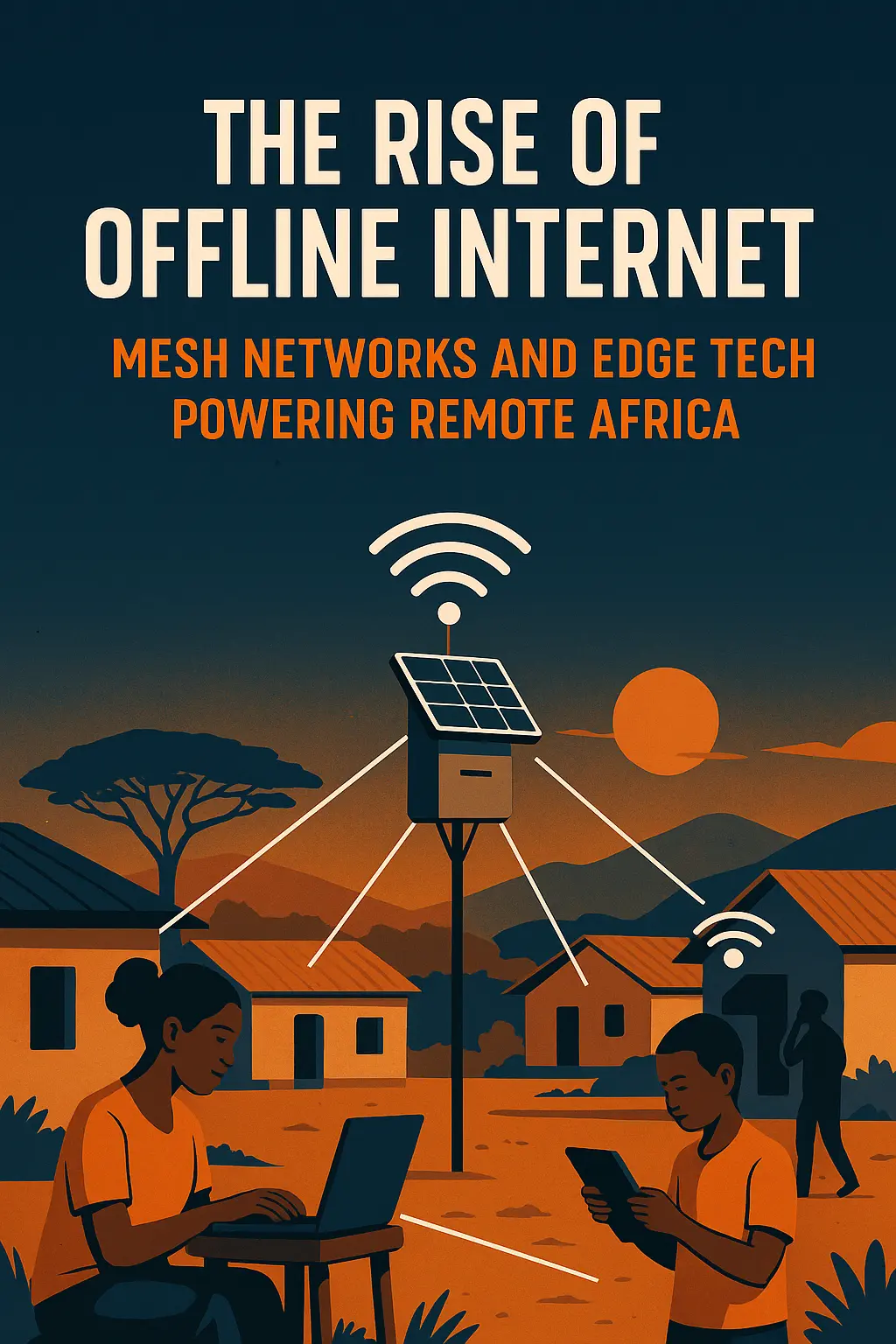Offline Internet in Africa: Mesh Networks, Edge Tech & Digital Inclusion
In 2025, In a world where the digital divide is still painfully real, rural internet solutions like mesh networks and offline-first apps are reshaping what's possible in remote areas of Africa. Across villages, underserved towns, and health camps, communities are logging on without needing a single bar of signal, thanks to mesh networks and edge computing.
This is the story of how the offline internet is redefining access, opportunity, and resilience in some of the most digitally marginalized areas on the continent.

Why Internet Access in Remote Areas of Africa Still Lags Behind
Despite explosive growth in smartphone penetration across Africa, reliable internet access remains a luxury.
According to the ITU, over 600 million people in Africa still lack consistent internet access, especially in rural or conflict-prone areas.
Major obstacles include:
- Sparse or expensive telecom infrastructure
- High data costs and limited coverage from mobile networks
- Power shortages that disrupt connectivity
This has left millions out of reach for e-learning, telemedicine, remote jobs, and financial inclusion.
How Mesh Networks in Africa and Edge Computing Are Closing the Gap
🔗 Mesh Networks: The People-Powered Internet
Unlike traditional networks that depend on centralized towers or ISPs, mesh networks connect devices directly to each other in a decentralized web. Each device becomes a “node” that relays data, expanding the network as more users join.
Key Advantages:
- Works in areas without cell towers or broadband
- Scales easily as more people come online
- Supports community-owned infrastructure
Real-life application:
In rural Kenya, BRCK deployed mesh-based Moja WiFi boxes powered by solar panels in schools and buses—offering free offline content like Wikipedia, textbooks, and health info to students.
🧠 Edge Computing: Bringing the Cloud Close to the Ground
Edge computing shifts processing away from remote servers to local devices (like smart routers, kiosks, or smartphones). This reduces reliance on live internet and speeds up access.
Use case:
In Northern Nigeria, a health NGO uses Raspberry Pi-powered “edge boxes” to deliver offline telemedicine consultations and store patient data locally. The devices sync with central servers only when connected to a mobile hotspot.
Offline-First Apps: Designed for Intermittent Connectivity
Offline-first architecture is especially vital for limited internet access in rural areas, ensuring apps remain usable even when connectivity drops, something common across many parts of sub-Saharan Africa.
Tech companies are now building “offline-first” platforms that allow users to interact, learn, transact, and create content with minimal or no internet.
Examples include:
- Kolibri: Offline learning management system used in refugee camps and rural schools.
- OppiaMobile: Health worker training app pre-loaded with videos and quizzes.
- BeeLine Reader: Improves reading on low-resource devices by using color cues and offline compatibility.
These tools are enabling real education, healthcare, and communication, without relying on constant connectivity.
The Unique African Advantage: Necessity Drives Innovation
What’s remarkable is how African entrepreneurs are leading this wave. Unlike the West, where connectivity is taken for granted, African innovators are rethinking what the internet can be in disconnected environments.
In Ghana, Bliss LMS offers a fully offline learning portal distributed on USB drives and local servers in schools.
In Tanzania, Upepo Tech has created a disaster-response mesh network that activates when mobile towers fail.
These are not stopgap solutions, they are tailored infrastructures that work because they don’t depend on the global internet.
Challenges & Limitations
As promising as the offline internet is, there are hurdles:
- Limited funding for decentralized and community-owned models
- Hardware costs for deploying edge devices at scale
- Digital literacy gaps in target populations
- Data synchronization conflicts when syncing offline and online records
Yet, these are being addressed through partnerships with NGOs, open-source tech, and creative financing (e.g., pay-as-you-go mesh kits).
Conclusion: Not a Shortcut; A Blueprint
The rise of mesh networks and edge computing in Africa isn't just a workaround, it's a blueprint for a more inclusive, resilient internet. One that doesn’t crumble with a power outage or disappear with poor network bars.
The future of digital inclusion in Africa doesn’t always depend on more cell towers or satellites, it lies in community networks, solar-powered mesh systems, and local innovations built for African realities.
In a world rushing toward automation and cloud dependence, Africa is reminding us that sometimes, the future is offline.